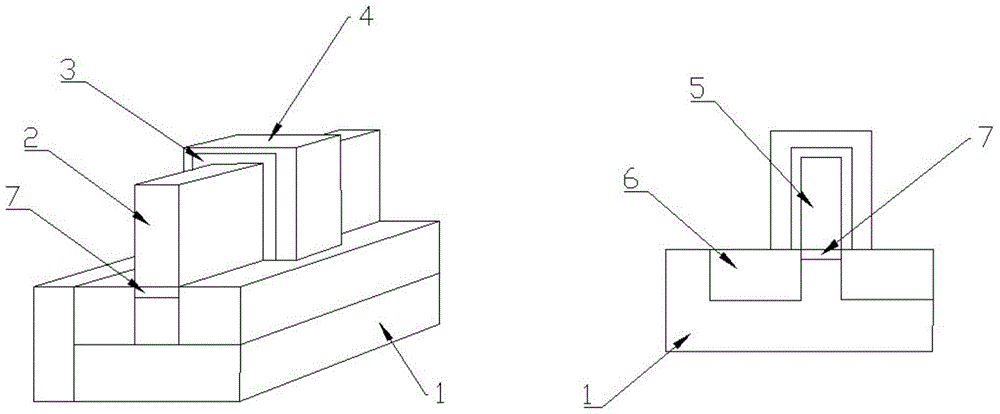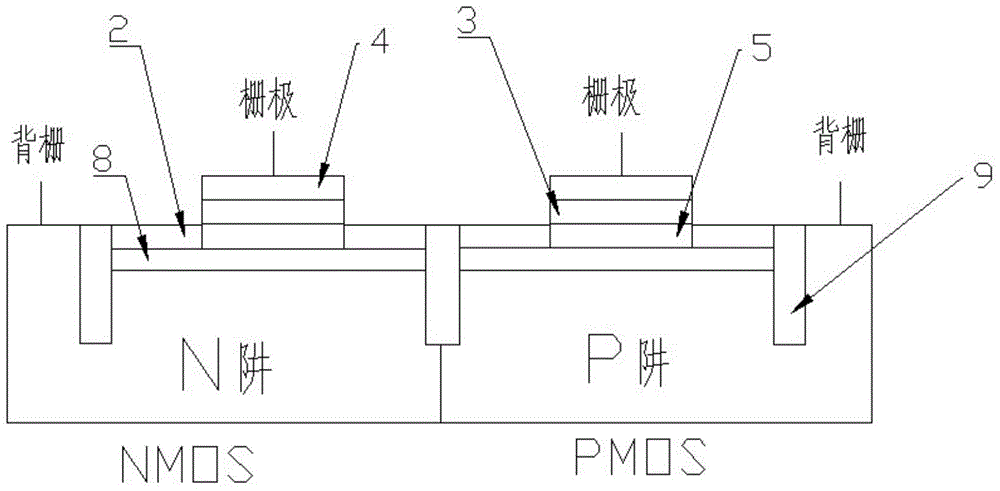Anti-irradiation Technology and Implementation Method Based on Back Gate Transistor
An anti-radiation, transistor technology, applied in the direction of electric solid-state devices, semiconductor devices, semiconductor/solid-state device components, etc., can solve the problems of integration limitations, application limitations, and high costs, and achieve improved performance, low cost, and high speed. Effect
- Summary
- Abstract
- Description
- Claims
- Application Information
AI Technical Summary
Problems solved by technology
Method used
Image
Examples
Embodiment Construction
[0037] The specific embodiment of the present invention will be further described below in conjunction with accompanying drawing:
[0038] The anti-irradiation technology proposed in the present invention is based on a transistor structure with a back gate bias, which can be a bulk silicon transistor or a silicon-on-insulator (SOI) transistor; it can be a general MOS transistor or a Emerging Finfet transistors. A bulk silicon Finfet structure with back gate bias such as figure 2As shown, 1 is the substrate, which is also the back gate bias layer of the transistor, 2 is the doped source region or drain region, 3 is the gate oxide layer, 4 is the gate of the transistor, and 5 is the Fin of the transistor. The channel, 6 is an insulating structure, and 7 is an insulating oxide layer, which also constitutes the oxide layer of the back gate. An insulating structure 6 is embedded on the back gate bias layer 1, and an insulating oxide layer 7 is covered on the surface of the back ...
PUM
 Login to View More
Login to View More Abstract
Description
Claims
Application Information
 Login to View More
Login to View More - R&D
- Intellectual Property
- Life Sciences
- Materials
- Tech Scout
- Unparalleled Data Quality
- Higher Quality Content
- 60% Fewer Hallucinations
Browse by: Latest US Patents, China's latest patents, Technical Efficacy Thesaurus, Application Domain, Technology Topic, Popular Technical Reports.
© 2025 PatSnap. All rights reserved.Legal|Privacy policy|Modern Slavery Act Transparency Statement|Sitemap|About US| Contact US: help@patsnap.com



